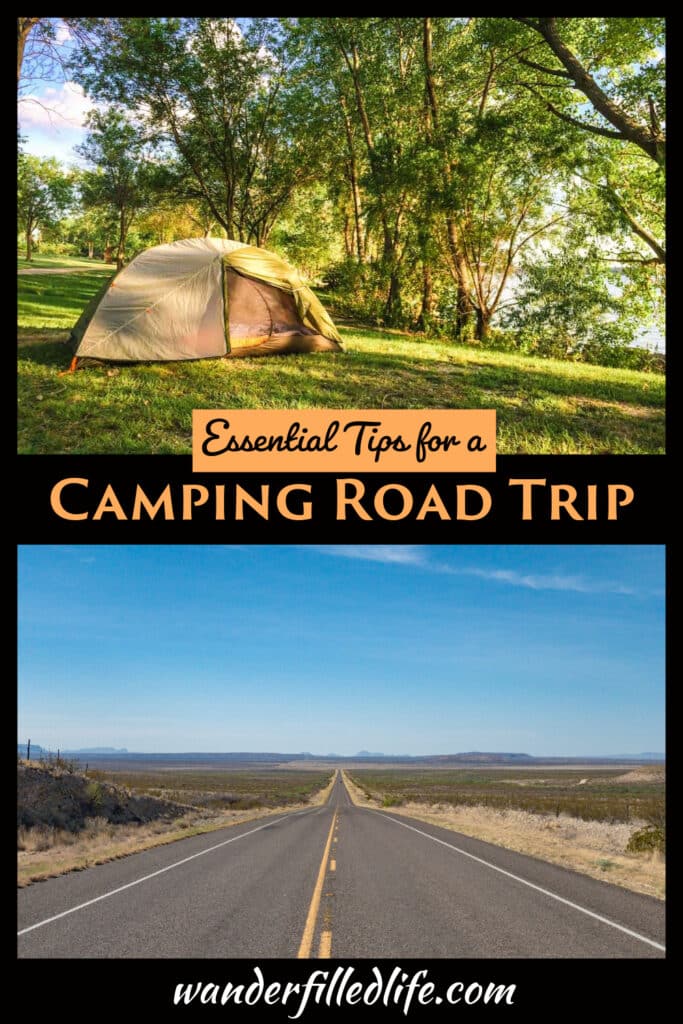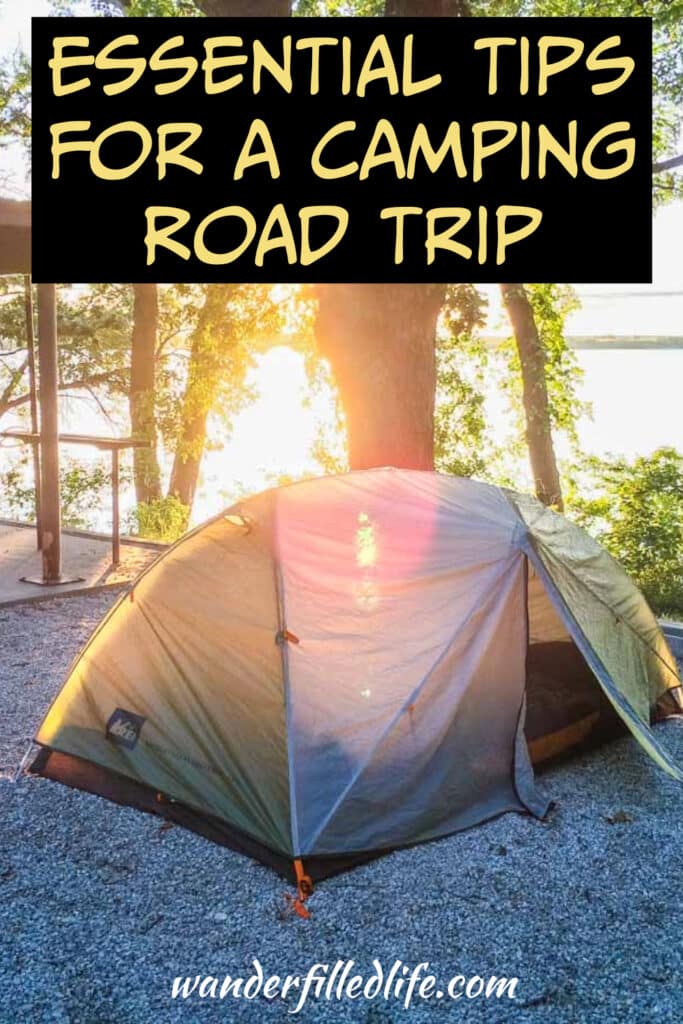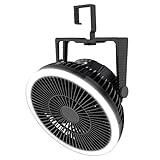Last Updated on February 17, 2024 by Grant
For me, camping road trips started in college. My first trip to the Florida Keys was a camping trip. My friends and I had a GREAT campground in Key Largo. We spent Spring Break sleeping in a tent just steps from the beach.
This led to longer camping road trips as I got older. When Bonnie and I started dating, our first big trip together was a camping road trip to Yellowstone National Park. It was that trip that cemented our love for each other and our desire to explore the National Parks.
It also led to our first month-long trip. That was a camping road trip to the Black Hills of South Dakota and Glacier National Park in Montana. We started to refine our tent camping gear to make it work better for us.
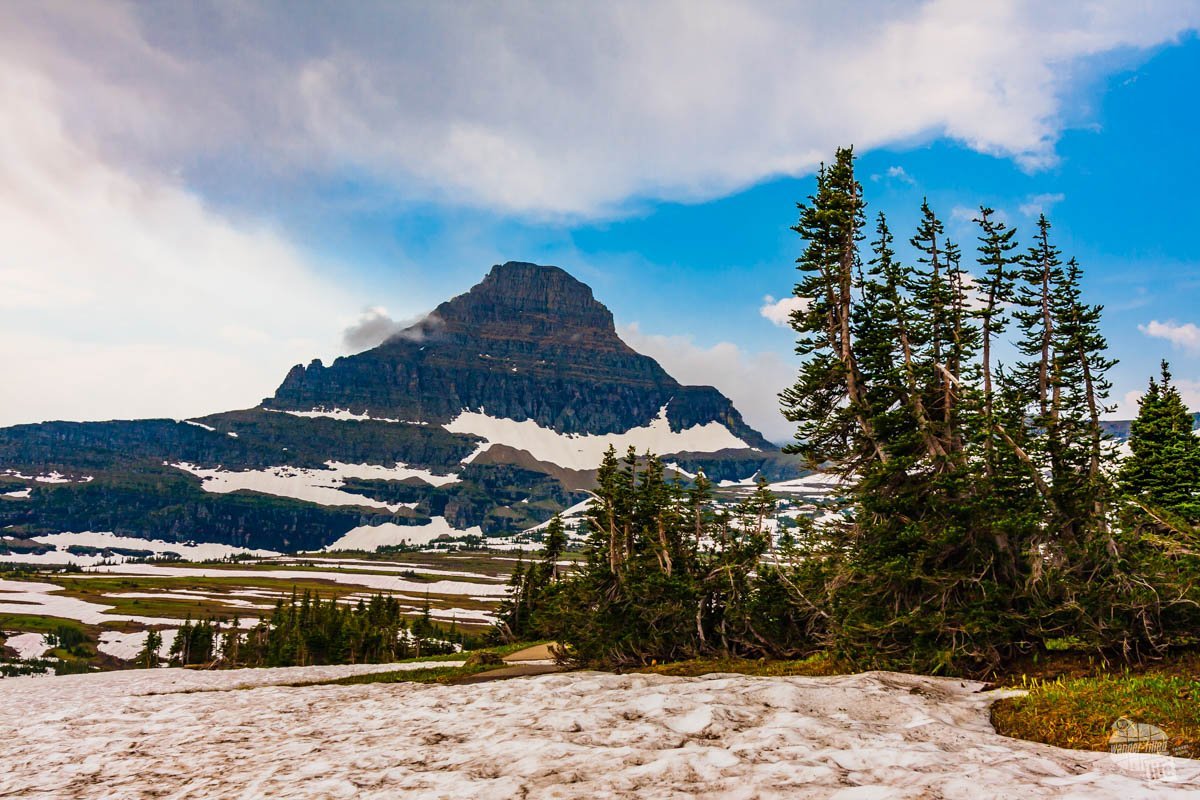
We took several tent camping road trips together: Texas for Spring Break, Great Smoky Mountains National Park in the fall, Yellowstone and Grand Teton national parks in the summer.
Eventually, we bought a camper and started the RV lifestyle. But, we have fond memories of the simplicity of our tent camping days. In fact, years after buying an RV, we took a tent camping road trip to Big Bend National Park in West Texas.
(Disclaimer: When we link to places where you can buy our stuff or places we stayed, we are using special codes that earn us commissions on the sales at no additional cost to you. Please see our Review Policy for more information.)
Pros and Cons of a Tent Camping Road Trip
Pros
The number one pro to a camping road trip is cost. Tent camping is just cheaper than any other way to stay. Even a really good tent is not that expensive compared to buying or renting an RV or staying in a hotel.
Read about our cost comparison between different road trip styles here.
The second biggest pro for a tent camping road trip is nimbleness. With a good tent camping setup, you can easily get set it up and take it down. That is really handy when you’re trying to make the most of limited vacation time!
Once, on the drive home from Yellowstone, we were chased across the plains of South Dakota by a thunderstorm. We just barely managed to get to the campground and get the tent set up before the storm caught up to us! With the camper, that would have taken much longer. Of course, regardless of how you are camping, setting up or taking down in the rain is never fun. But it is part of the outdoor experience.
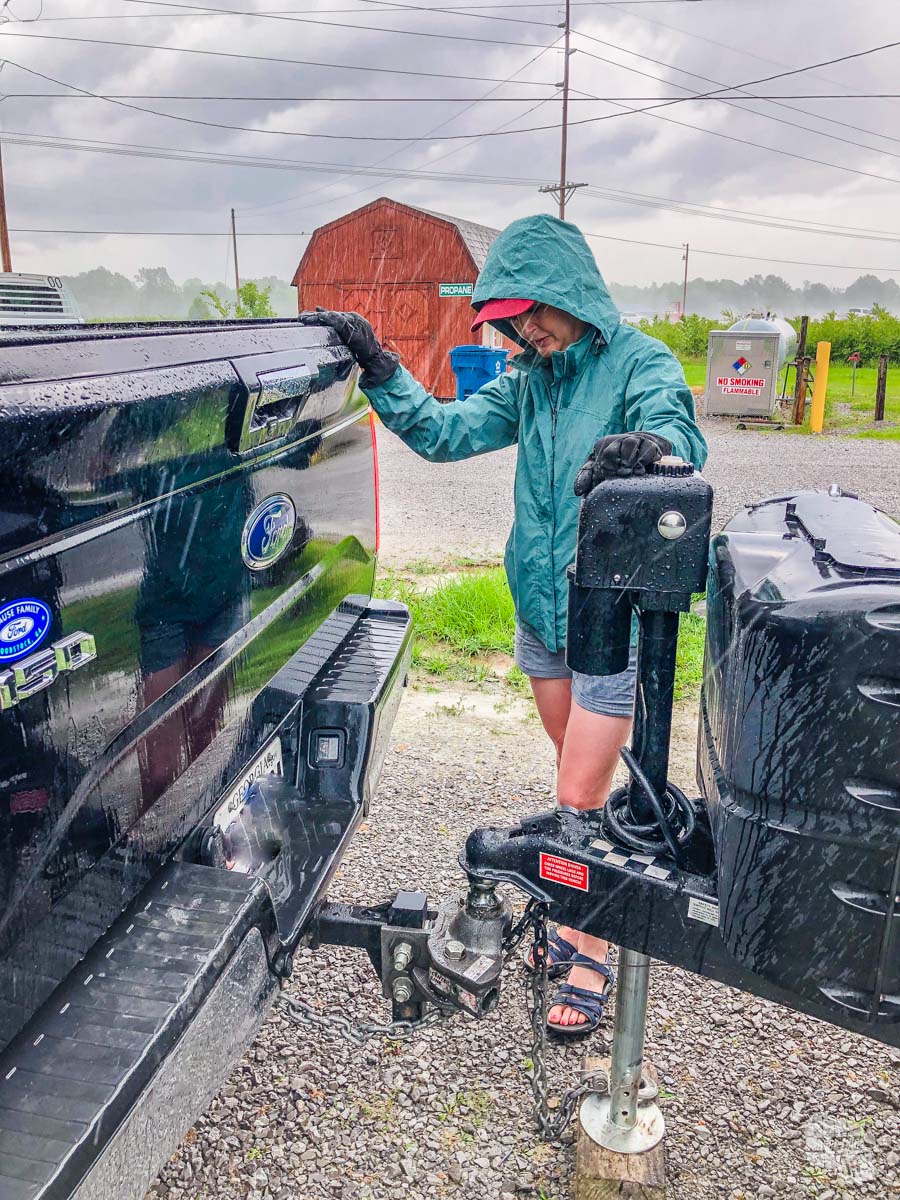
When we were tent camping, we could be set up in about 10 minutes and gone in about the same amount of time. It is similar to camping with a camper van in terms of being able to just pick up and leave quickly.
Another major boon for tent camping is the availability of tent sites in national and state parks. While there are a few campgrounds for larger RVs in parks, you will find much more availability for tents (or small campers).
Lastly, a good tent camping setup can fit into just about any vehicle with decent trunk space. A hatchback, SUV or truck makes for easier access and generally more space for gear. Still, I took many camping road trips in my old Mazda 626.
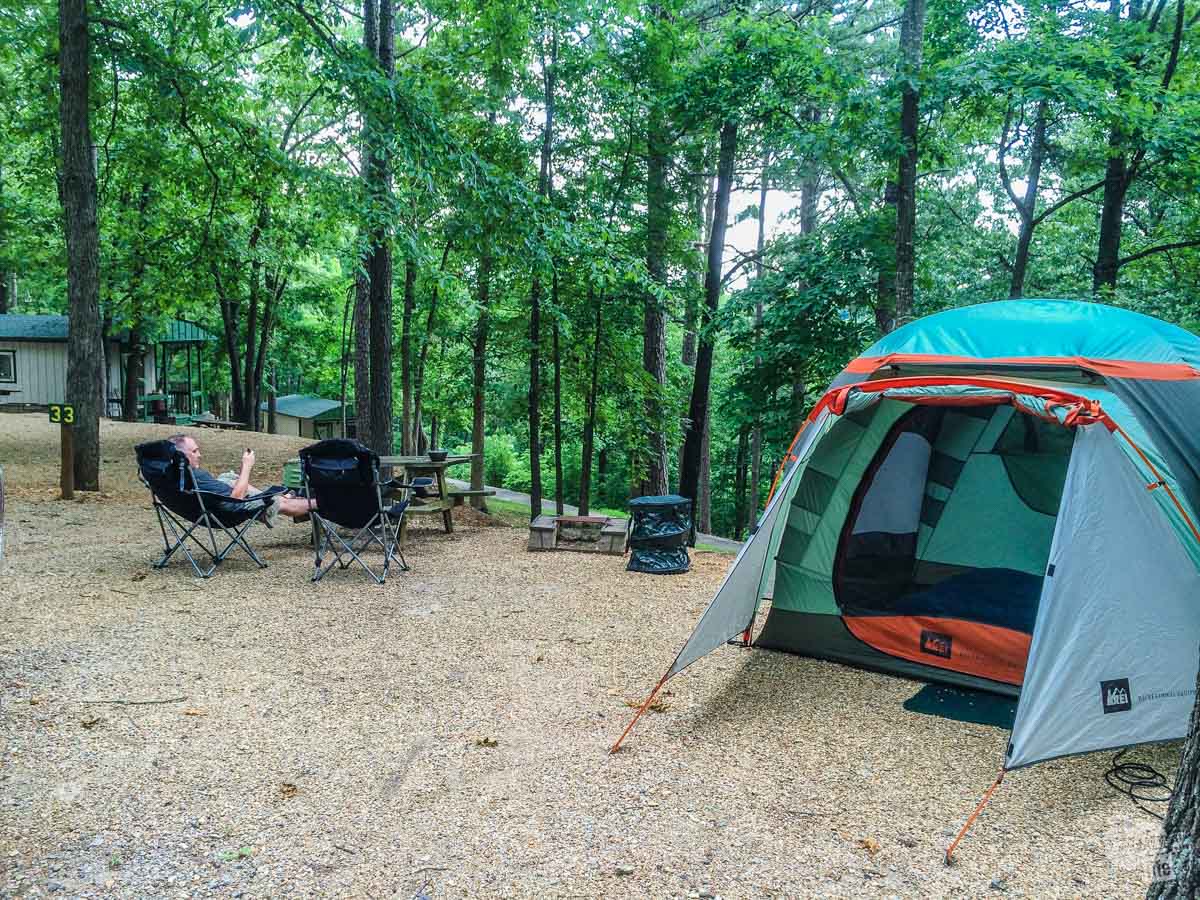
Cons
The single biggest con of a tent camping road trip is exposure to the elements. While tents are great when the weather is good, they can be limiting when the weather is not good.
In particular, stormy weather can make for some scary moments in a tent. We’ve huddled together in our tent when the wind howled in Texas and a severe thunderstorm pummeled us in Yellowstone.
The heat is also an issue for tent camping. We have spent some sweltering nights in our tent at various spots throughout the country. While there are some modern devices you and use to mitigate the heat (more on that below), there’s only so much you can do without air conditioning.
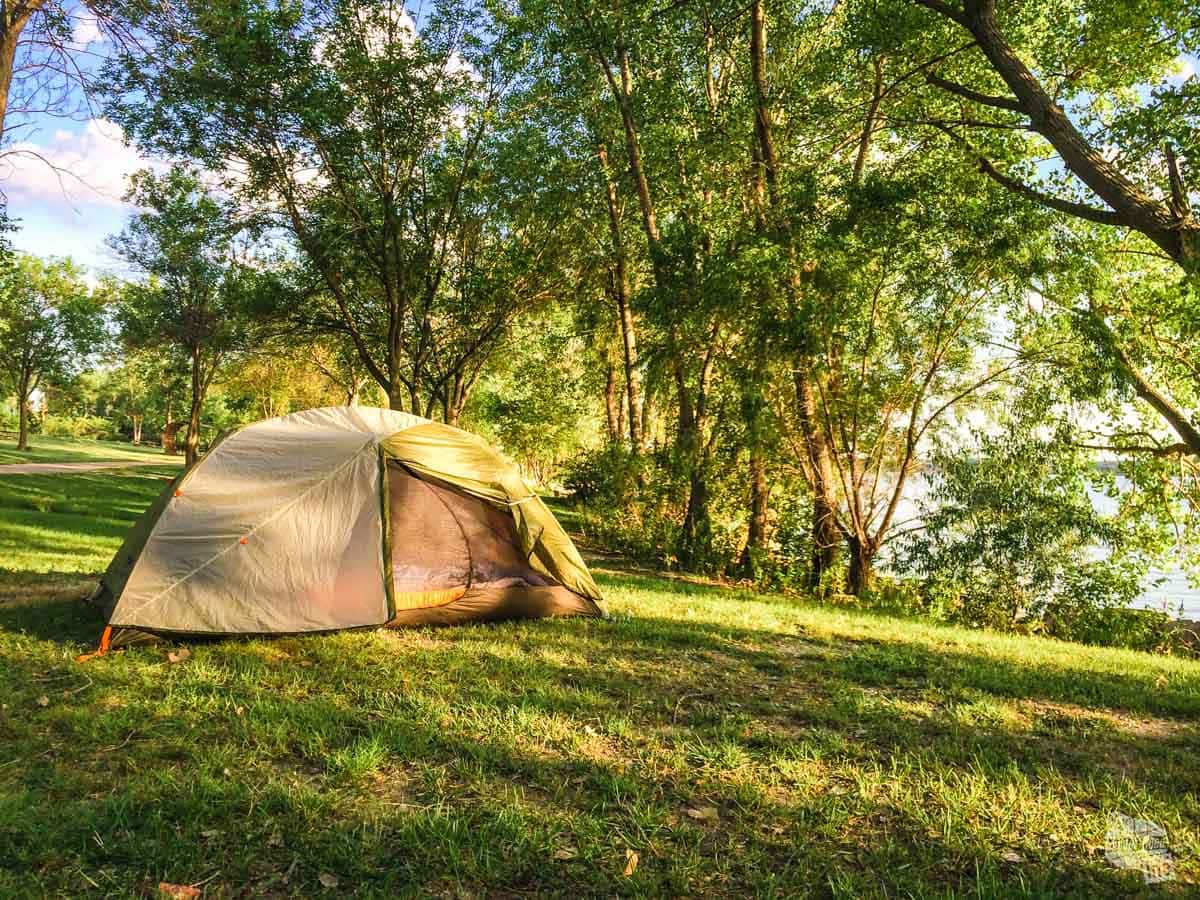
In particular, I remember a very warm morning while we were tent camping in Wall, SD visiting Badlands National Park. The tent heated up very quickly and by 8 a.m., it was downright toasty. I also remember driving a long way across Kansas looking to find any campground with shade, since it was easily 95 degrees outside and the lack of shade was a deal breaker for a lot of would-be campgrounds.
Another major con is the lack of campgrounds with facilities for tent campers outside of state and national parks. The more we have traveled, the more we have realized campgrounds just do not have much in the way of tent camping sites left anymore, focusing on RVs instead.
And, while you can take your pet with you, you cannot leave your pet in a tent while you go out and explore. That’s not OK. And, unfortunately, most national parks have very strict rules on where pets can and cannot be.
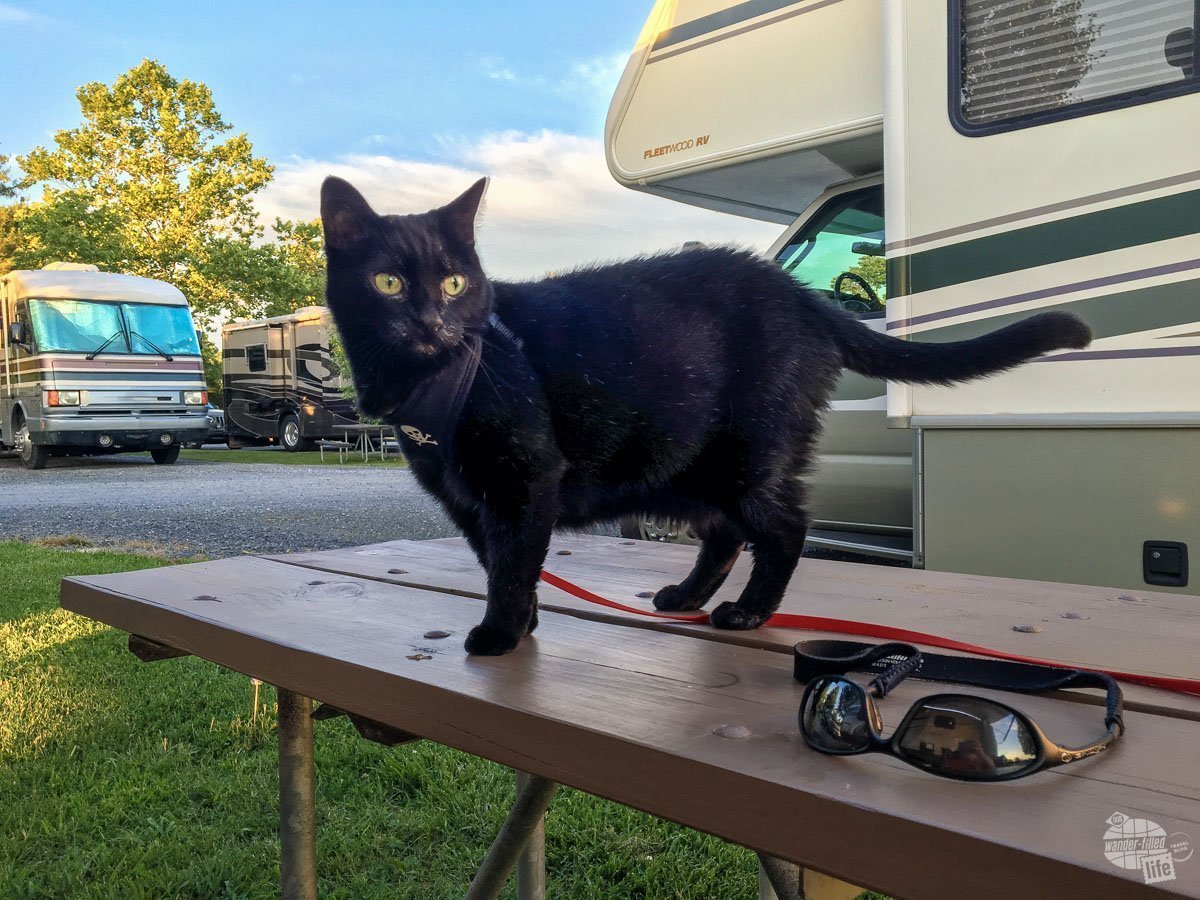
Lastly, there is an inherent lack of security when tent camping. Honestly, we have never camped anywhere we did not feel safe, at least in terms of humans, in a tent. We have, however, camped with our RV in places I would not necessarily stay in a tent.
That said, we have also woken up to bison walking by our tent in Theodore Roosevelt National Park in North Dakota. We don’t worry too much about animals bothering us in a tent but the walls of the tent are pretty darn thin!
Tips for Making the Most Out of Your Tent Camping Road Trip
Tip #1: Choose Your Destination Based Upon the Weather
Seriously, go where the weather is good when you plan on taking your trip. If you want to visit the Southwest, plan on going in the late winter or early spring before temperatures get too hot. When the Rocky Mountains are calling your name, get up there after the snow melts in the early summer.
If you know when you want to go, research different destinations which are good for that season.
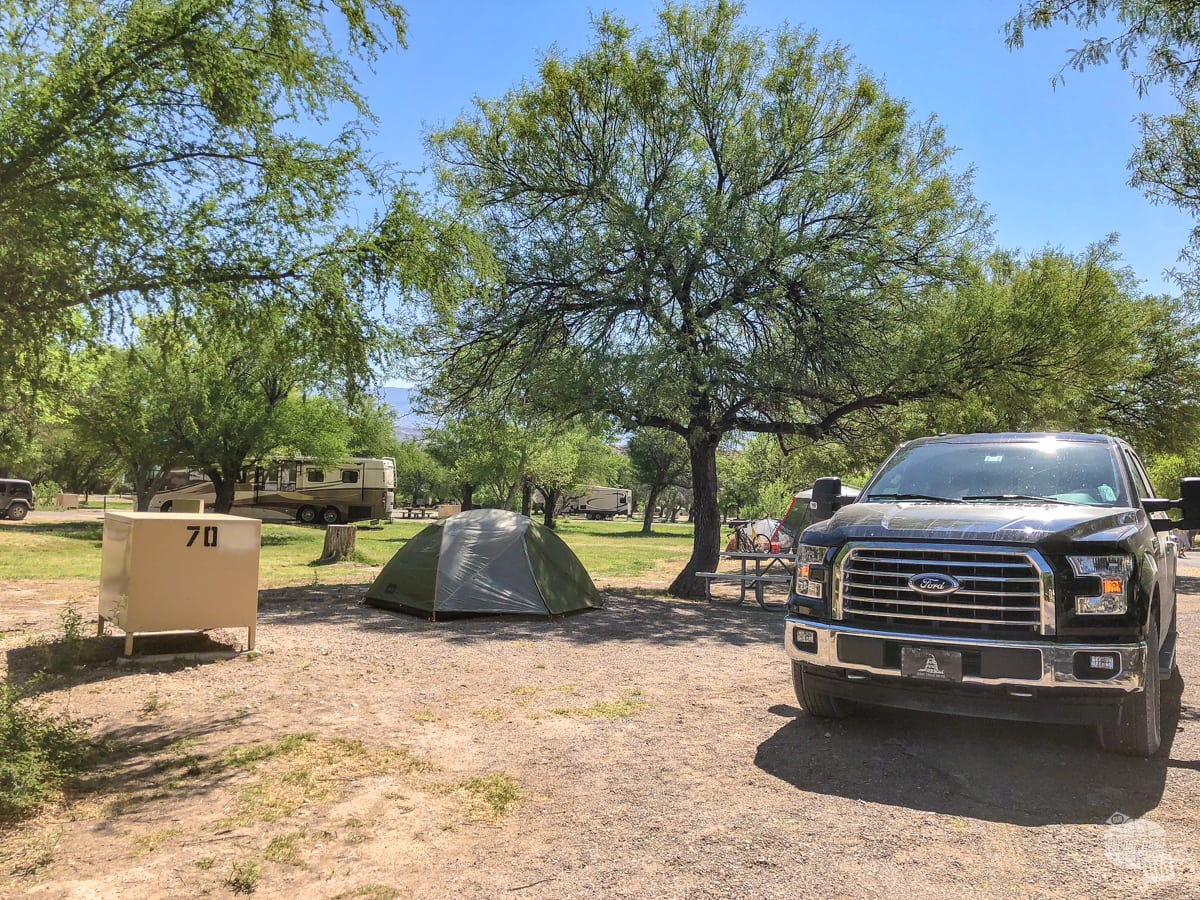
Tip #2: Don’t Be Afraid to Stay in a Hotel
If we were doing a long driving day on the way to our destination, we would often stay in a hotel that night. While it would increase our costs, it would decrease our fatigue.
After a long stretch of tent camping in Yellowstone and Grand Teton national parks, we opted to spend the next few nights staying at a cheap hotel in southern Wyoming. It was much needed!
Tip #3: Gym Memberships and Truck Stops Can Get You a Shower
While many private campgrounds have showers, many national park campgrounds do not. If you’re not too far from a major city, having a nationwide gym membership can get you a shower. Alternately, truck stops like Love’s and Pilot have showers you can pay for.
Tip #4: Be Prepared for the Weather… All the Weather
Plan for worse weather than you expect… it may be colder, warmer, wetter or drier than you expect. Rarely is the weather exactly what it “should” be.
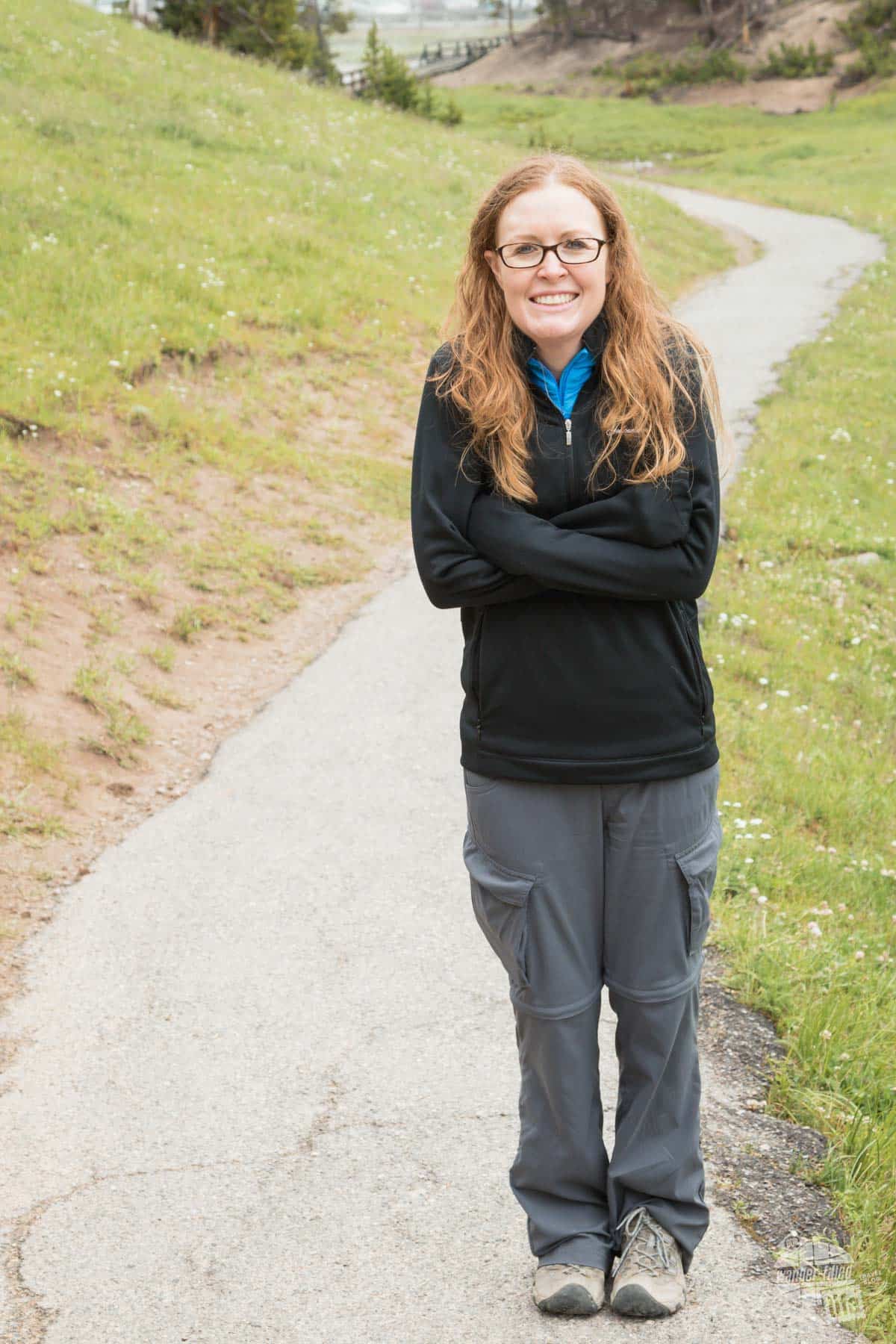
That said, if you don’t feel like you have everything you need, Walmart is your friend and will have a lot of what you need. In fact, we had to buy an extra blanket when camping in Yellowstone National Park because we were not prepared for the cold weather in the summer.
Tip #5: With a Good Vehicle, You Can Camp in Remote Areas
One of the best things about a tent camping road trip is you can go to some really remote areas where you simply can’t take a camper. We did this in Big Bend National Park, camping along River Road in a remote area of the park.
Seriously, with a four-wheel drive vehicle and a good tent camping setup, you can access places few people go and stay for as long as you have supplies. This has become a popular pastime, called overlanding.
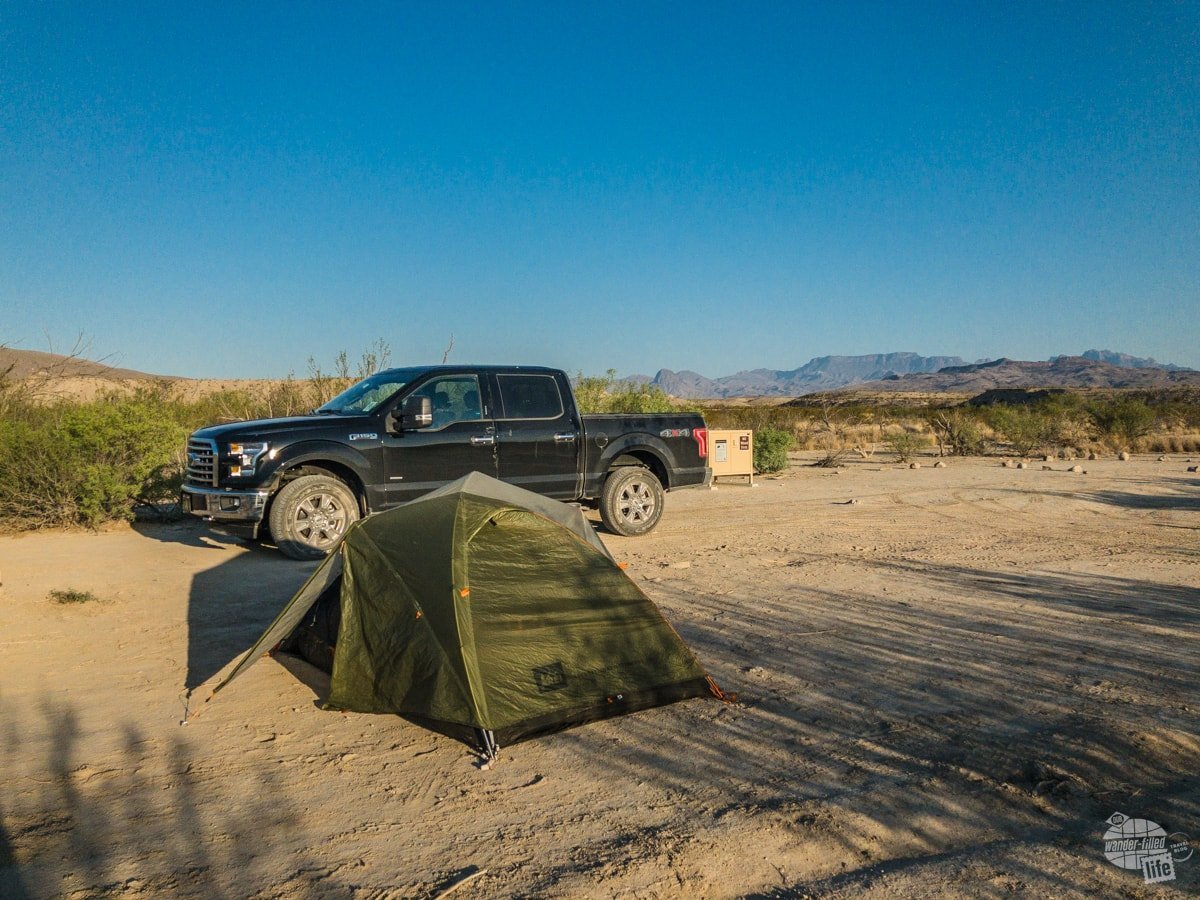
How to Pick a Campground for a Camping Road Trip
When it comes time to pick a campground for a tent camping road trip, the single biggest consideration has to be shade. Even up North, highs in the summer can get quite hot. The shade will make a significant difference, even for RV campers. Having shade will make a huge difference in being able to comfortably hang out at your campsite during the day.

Next, make sure the campground has restroom facilities for tent campers. For example, we stayed at one campground in Key Largo which had very limited restroom facilities. There was one toilet per gender for the entire campground. The shower was attached to the toilet, meaning if someone was taking a shower, no one else could use the toilet.
From the perspective of the owners, it was no big deal since most of the guests were RV campers with their own bathrooms. From the perspective of the tent campers, it was really frustrating, especially early in the morning!
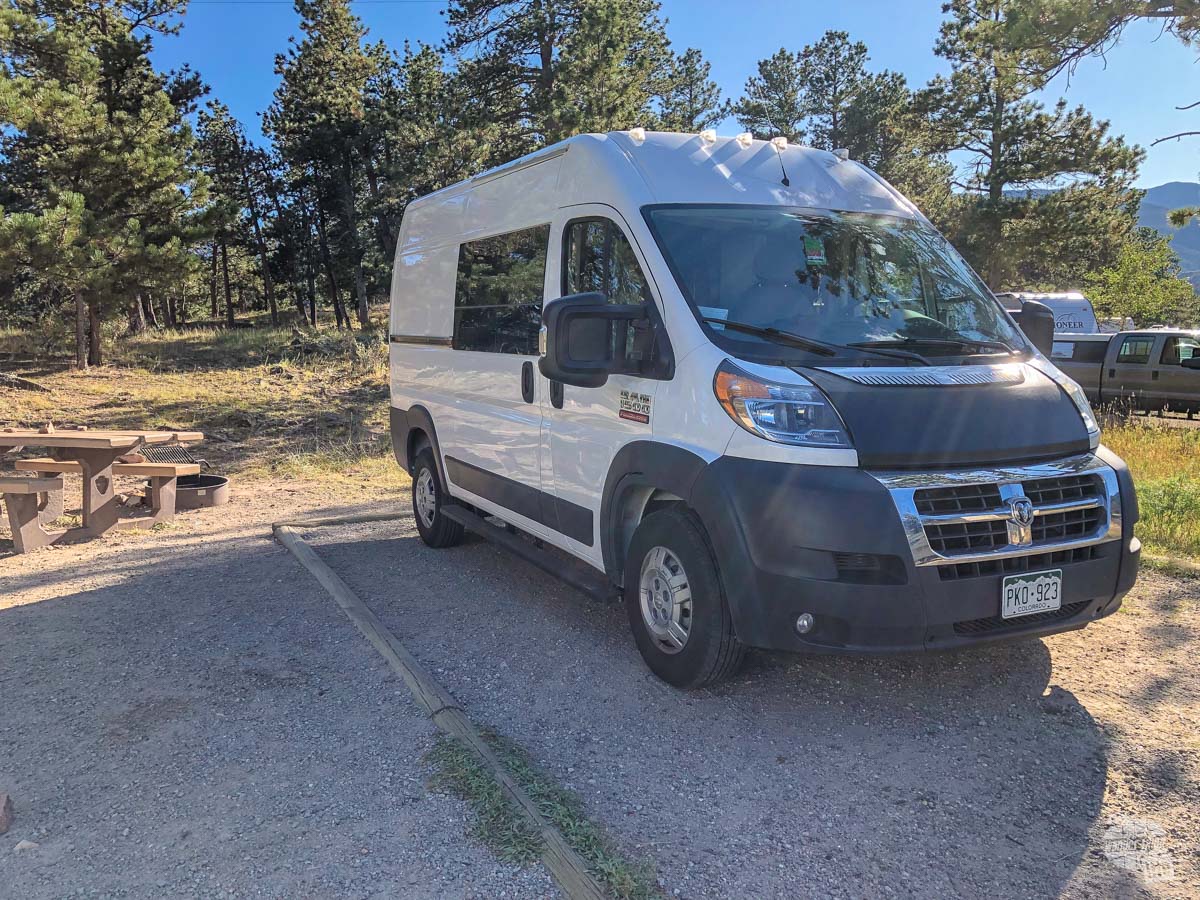
Showers for tent campers are another consideration to look for, especially for longer stays in remote areas. As noted previously, many campgrounds in national parks do not have showers. That said, we have seen some that are adding solar shower stalls, like at Rocky Mountain National Park. These allow you some privacy while you use a portable solar shower you let warm up during the day.
A water spigot to fill up water bottles and a sink to clean dishes are other big things to look for. We got so tired of none of the campgrounds we stayed at having a dishwashing station. So, we bought our own collapsible dishwashing sink.
That said, we have stayed at more primitive campgrounds which lack those amenities. If you are going to stay at a primitive campground with limited or no facilities, just be sure to bring everything you need with you.
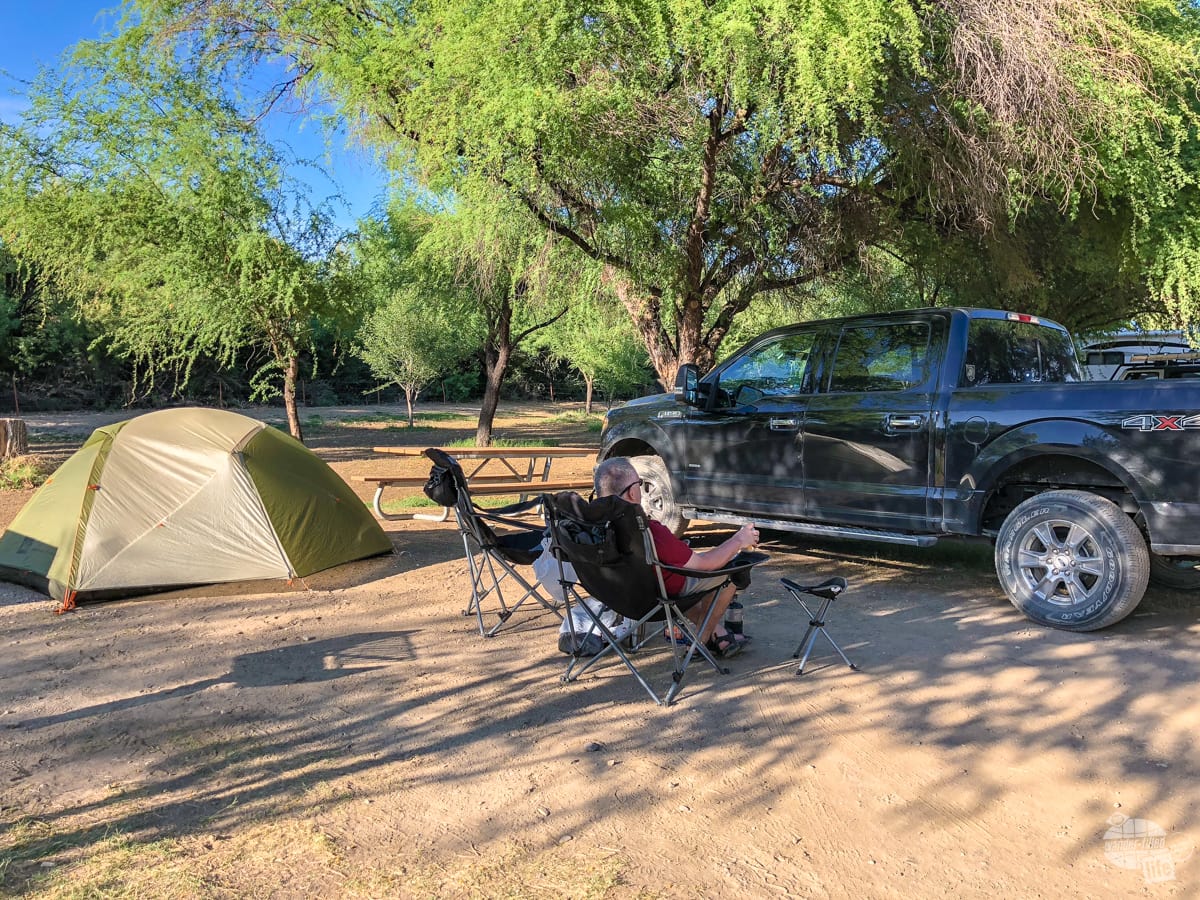
Gear You Need for a Tent Camping Road Trip
A Tent (or Two)
The most important thing you need for a tent camping road trip is a good tent! That should seem like a no-brainer but I have seen some tent campers out there using very poor tents for their purpose and struggled with them.
The first major thing to consider when purchasing a tent for a camping road trip is how much space you need. If it is just going to be two people, a small tent can work. If you are taking a pet or kids with you, your tent needs to grow.
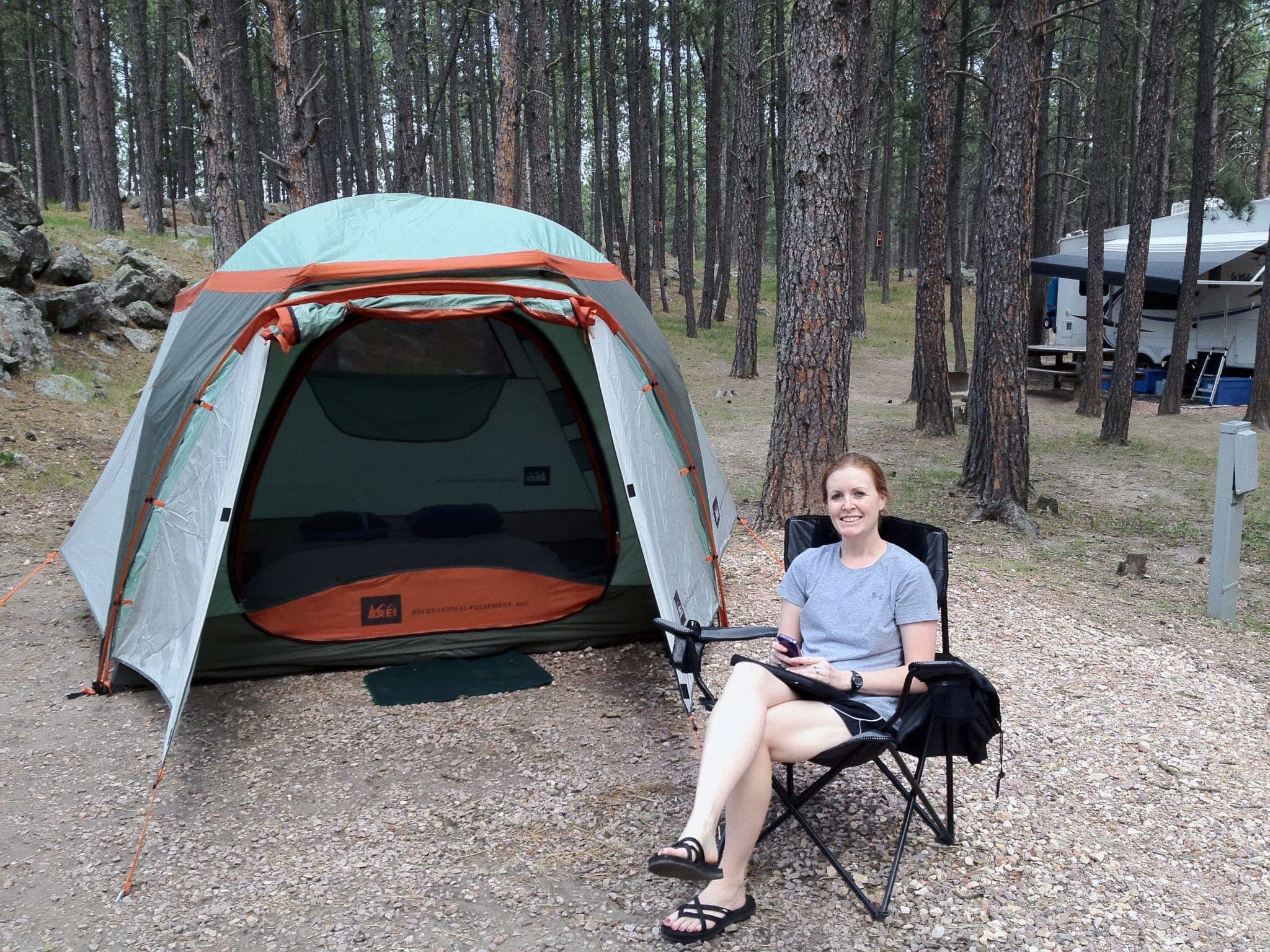
When I went on my first long tent camping road trip, I had a small dome tent that was barely big enough for two people. While it worked OK while I was in college, any time it rained, I was stuck in a pretty small space with poor ventilation.
Even when Bonnie and I went on our first camping road trip to Yellowstone, we stayed in a larger, better-ventilated dome tent but I still could not stand up in it and it only had one door, meaning Bonnie had to climb over me to get out to go to the bathroom.
Still, those tents were easy to put up and take down.
A Two Tent Set Up
So, when it came time to go on the road for a month-long camping road trip, we took two tents with us.
We took a large tent, which I could stand up in and allowed us to walk around the mattress. Being able to stand up while changing clothes is really nice! Not having to climb over Bonnie to go to the bathroom is also really nice!
That made a much more comfortable stay when we knew we would be in one place for several days. The tent had a vestibule, allowing us to store gear and duck out of heavy rain with our chairs. It also allowed us to leave the large door flap open, making for plenty of ventilation.
While this larger tent was great, it struggled in high winds and it took about 20 minutes to fully set up.
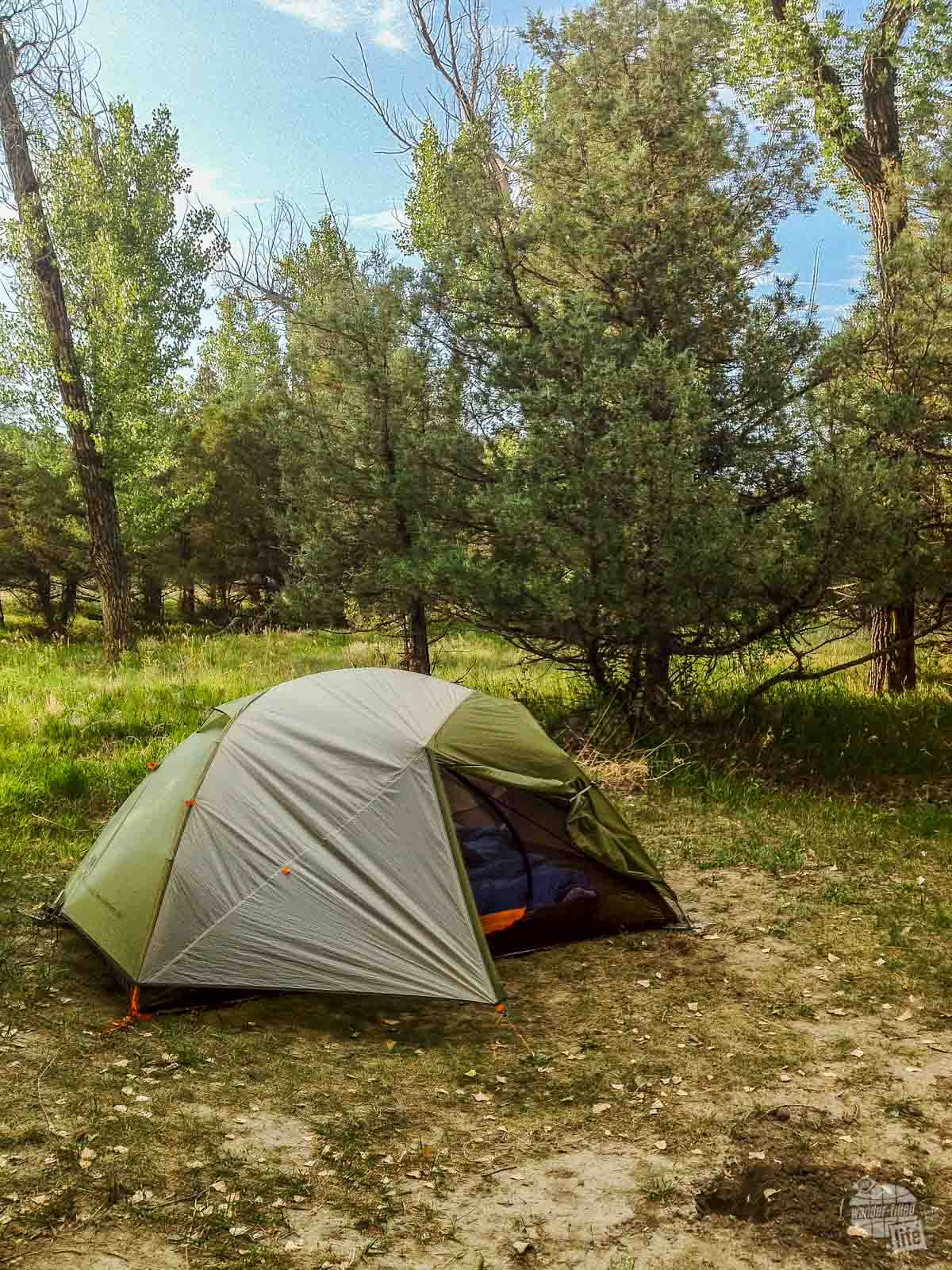
We also took a smaller tent, which had doors on both sides. That allowed for one of us to easily go to the bathroom at night if needed. It was also really quick to set up, allowing us to have it fully set up in less than 10 minutes. It was also lower to the ground, making for a lower profile in high winds. While I could not stand up in it, it was still comfortable for a night or two.
Tent Recommendations
We got both of these tents at REI, which makes some great outdoor gear. We even kept the smaller of the two tents after we got the camper and used it when we went to Big Bend National Park. Unfortunately, both tents have long been discontinued, so I can’t give you a specific recommendation.
That said, here is what I would look for in a big tent:
- Can I stand up in it?
- Will it go up and come down easily?
- Does it have a vestibule? Is the vestibule large enough to keep me (and a chair) dry during a rainstorm?
- Is there plenty of room on either side of a mattress for me to walk around?
Here is what I would look for in a small tent:
- Will it go up quickly?
- Does it have good ventilation?
- Does it have a low profile for rough weather?
- Does it have a large enough width that I can use the same air mattress for both tents?

A Good Air Mattress
A good air mattress will make all the difference in the world in your night’s sleep. We have had some good ones and bad ones during our time tent camping. I wish I could give you a good recommendation on a specific air mattress but, sadly, our favorite has long since been discontinued.
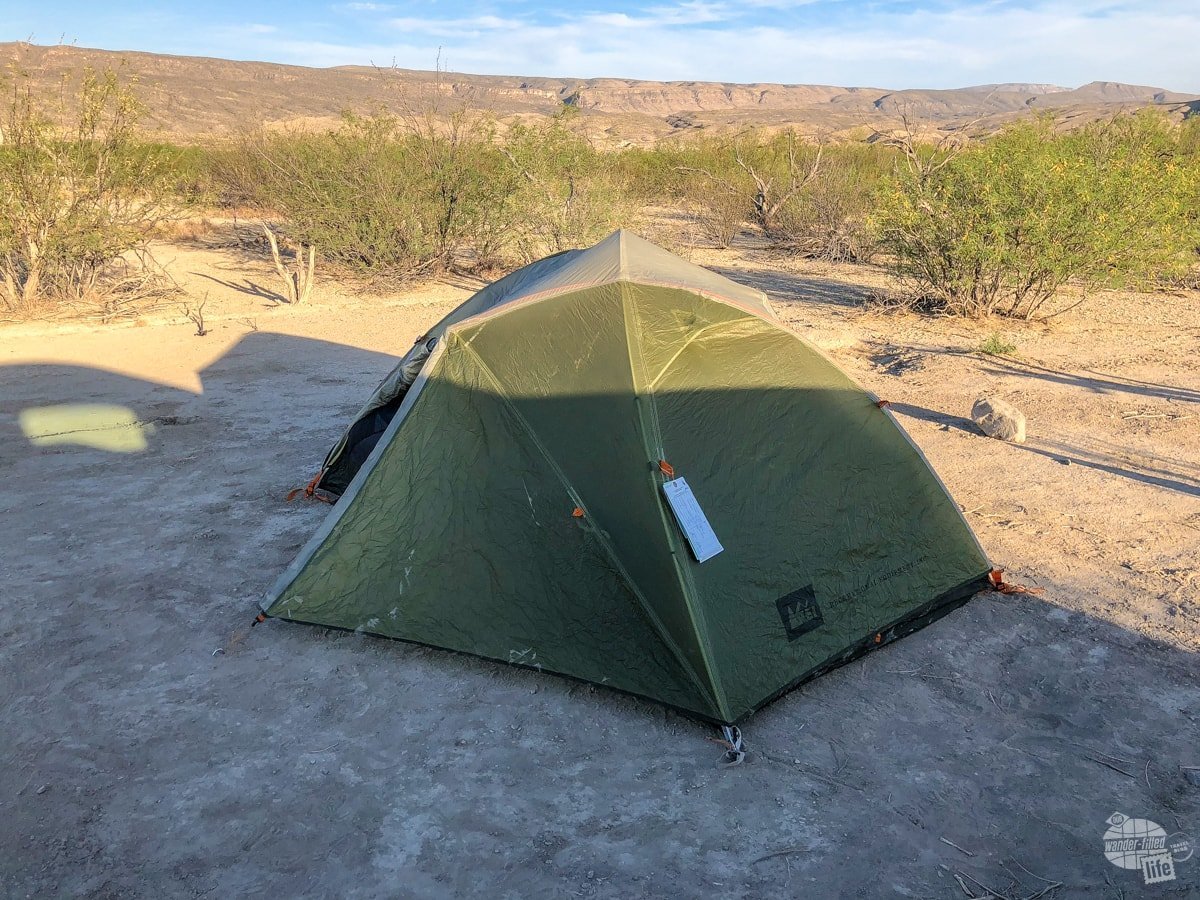
Still, get one with a battery-powered air pump. Unless you have an AC plug in your vehicle and an extension cable (or a solar generator… more on that below), you are going to need a battery-powered pump. If you don’t have one, you are gonna be that guy in the bathroom using the one outlet for hundreds of campers to inflate your mattress… if there is an outlet you can get to. Don’t be that guy (or girl)!
The other thing I will say about these mattresses is they will not last forever. Eventually, the seals start to wear out and you start waking up on the ground. Be prepared to replace it fairly often if you use it frequently or store it somewhere without air conditioning.
Sleeping Bag
If you are camping with a significant other, I cannot recommend highly enough getting a sleeping bag designed for two people, as opposed to two separate sleeping bags. It just makes it more comfortable overall, even better than zipping two sleeping bags together. We had a great one from Coleman we loved.
If you are going to high elevation, you are going to want supplemental blankets as well. We recently got a Rumpl blanket, which we love and is quite warm. They even have models highlighting various national parks.
We also recommend getting a couple of good camp pillows. We have used Thermarest and Klymit pillows. Both are compact and comfy.
Cooking Gear
I highly suggest getting a plastic storage bin and filling it full of your cooking gear. Keeping everything in one bin makes it easy to keep everything together and move it around as needed.
The first thing you need for your bin is a grill that uses the 1 lb. propane canisters from Coleman. Seriously, those green propane canisters are one of the greatest things when it comes to camping. Next, I suggest you get a small stove which uses those canisters as well. Between a single-burner stove and a grill, you can cook a ton of different meals.
Next, you will want some basic pots and pans. You can get a good nesting set or grab something cheap, either way works. You will also want basic utensils and plates. Paper plates are a good idea anywhere you won’t have good access to water. A collapsible wash basin is perfect for washing dishes where you can’t find a sink for dishwashing.
Finally, toss in some generic spices and your cooking bin is set.
A Solid Cooler
Cooler technology has improved so much since we were tent camping on a regular basis. With the advent of good coolers that will keep ice frozen for days, it makes it a lot easier to keep perishable food and tasty beverages cold.
YETI, RTIC and several other brands make great coolers that will make camping a lot better and reduce your need for ice.
One of the things we always looked for in a cooler was a drain plug at the bottom for dumping water out. That said, that drain plug can be a liability and we have ended up with a very wet trunk space when we forgot to close the plug after draining.
Gear for Hanging Out
Of course, you are gonna want some good, comfy camp chairs to lounge in… We also recommend getting some footstools to go with those chairs to use as footrests… being able to kick up your feet is a great thing.
We also have a great camp table from Alps Mountaineering which has a checkerboard and plenty of cup holders.
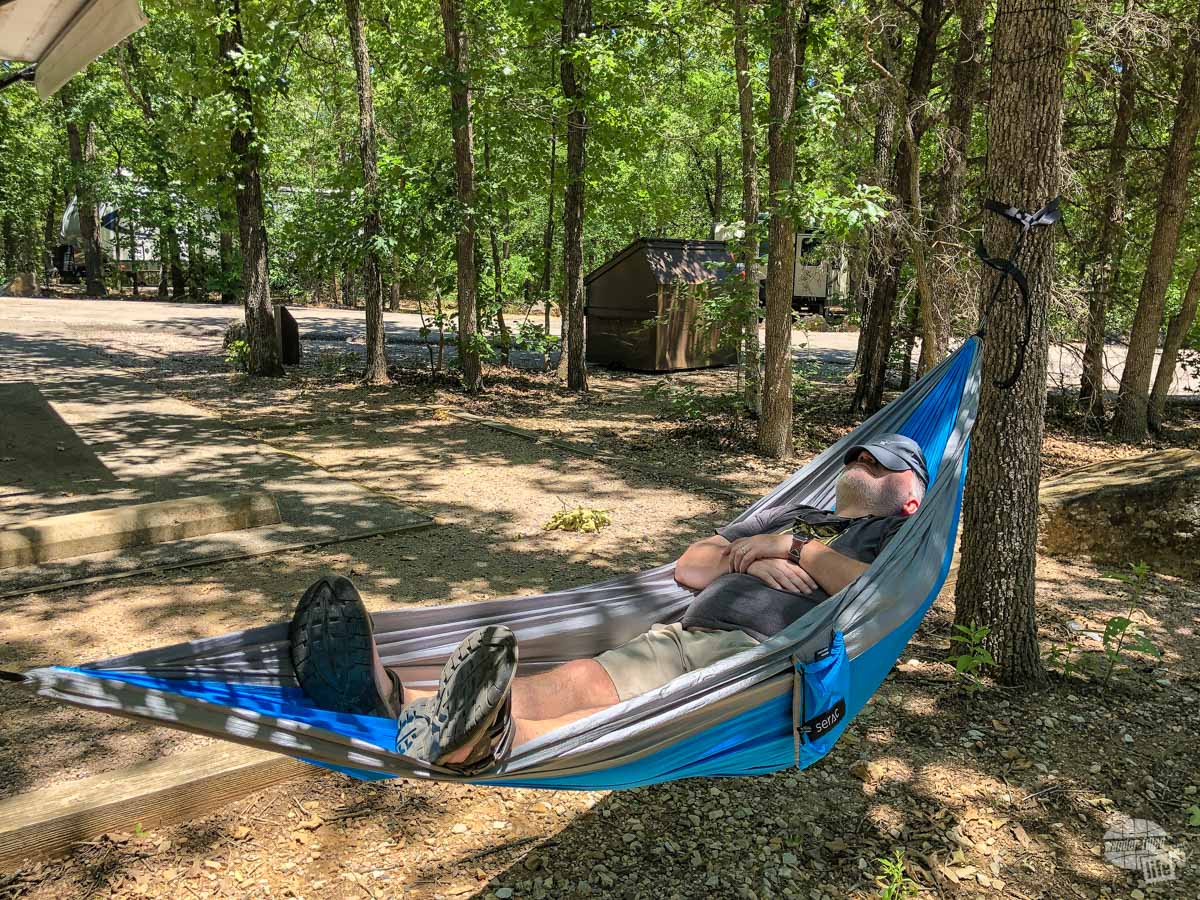
Hammocks round out our gear for hanging around the campground. There’s nothing like kicking your feet up in the shade. We have a couple of hammocks we keep in the camper and there are several great brands out there. We have Serac and Wise Owl hammocks and like them a lot.
If you happen to have a lot of cargo space to work with, like a truck bed, you can upgrade your chairs to these zero G chairs and get yourself an insect screen tent to put up so you can get away from bugs and have some portable shade.
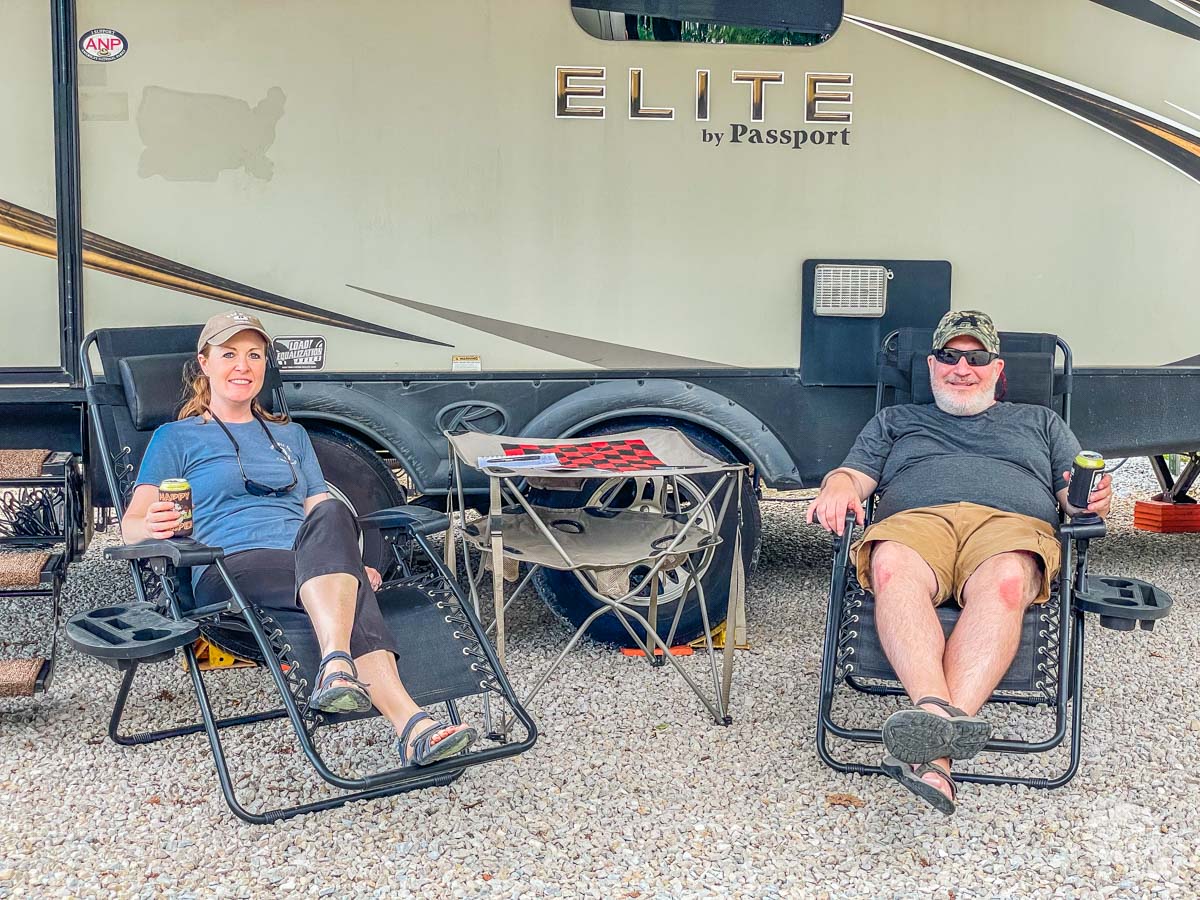
Gear Recommendations for Helping You Stay Comfortable
Fan
Since dealing with the weather is one of the cons of a tent camping road trip, I recommend getting a battery-powered fan to use in your tent. Just having some air circulation will make a huge difference in how well you sleep at night.
We had a Coleman battery-powered fan which hung from the top of our tent and provided some circulation as well as an overhead light. It made a big difference. Now, they have even longer-lasting better fans, like this one.
Solar Generator
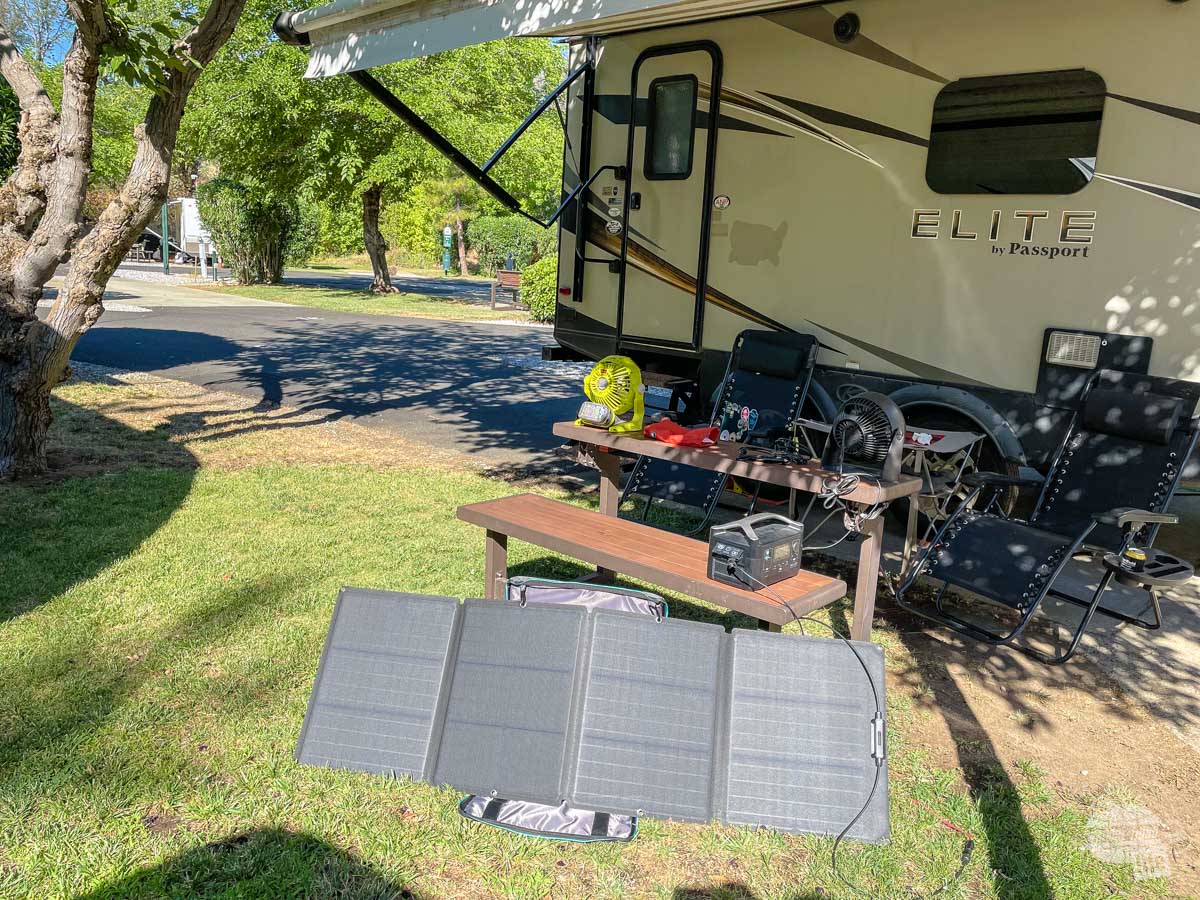
If you need to power something or keep a bunch of devices charged, we recommend getting a solar generator. The folks at Ecoflow sent us a River solar generator a few years ago and we take that thing with us everywhere now. We even purchased a battery add-on, which doubled its capacity (basically to a pro model) and a 110-watt solar panel to charge it.
We use it whenever we are boondocking or dry camping. It can be charged with the truck while driving or we can use the solar panels to power it. It will charge all of our electronics, including laptops, and it will even run Bonnie’s coffee maker!
Final Thoughts on Tent Camping Road Trips
With the right gear and planning, you can make a tent camping road trip a VERY cost-effective way to see the country. We explored dozens of park sites while tent camping… and loved every minute of it.
Still, as much as we loved tent camping road trips, there is something to be said for not having to sleep on the ground. Yes, we slept on an air mattress but we still had to get up from the ground every morning and that gets old. It’s also really great to have your own shade and air conditioning, which in turn, allowed us to travel with our cat for years. You can certainly see why we eventually transitioned from tent camping road trips to RV camping!
Still, we often miss tent camping. We miss how nimble we were and how quickly we could move from place to place. We miss the fresh air that comes from sleeping in a tent. Certainly, we miss how cheap it was. And while we still camp, an RV just isn’t the same as a tent.
Travel Resources
What do you use to find a flight?
We use Skyscanner to find deals on flights. Skyscanner has a great interface and compares tons of airlines for the best pricing and routing. That said, it does not always have every airline and some airlines will have better deals on their website. Still, Skyscanner is a great place to start.
Click here to search for a flight.
What do you use to find a hotel?
We typically stay at Hilton properties, so we use the Hilton website. You can find good Hilton Honors discounts or AAA discounts for a hotel there. We make great use of our free night certificates from our Hilton Honors American Express.
Click here to book a Hilton property.
If there are no Hilton properties available, we use TripAdvisor to read reviews and book the hotel. We find we can get the best price that way.
Click here to search for a hotel.
We recently partnered with Stay22 to add interactive maps to each of our destination posts. This will allow you to see a plethora of hotels and vacation rentals all in one responsive map of the area.
What if I need more space than I can get at a hotel?
We use Vrbo for the times when we have rented a cabin for a weekend getaway, like this cabin in Townsend, TN, or needed to rent a house for a large family vacation. We had a great experience with them in terms of refunding deposits when COVID hit and will continue to use them.
Click here to search for a vacation rental.
Who do you use for rental cars?
As a general rule, we book with Hertz for rental cars. We have had nothing but good experiences with them. Plus, we really like unlimited mileage and not worrying about crossing state lines. We have even rented from Hertz overseas in both Slovenia and Croatia.
Click here to book a rental car.
How about booking a cruise?
We have found some amazing prices for booking a cruise through Cruise Direct. We have saved a lot of money on our cruises compared to what we found elsewhere, making a last-minute Bahamas cruise even cheaper.
Click here to book a cruise.
What if I want to rent an RV?
We highly recommend Outdoorsy for RV rentals. We rented a camper van for a week to visit Rocky Mountain National Park for the elk rut and Custer State Park for the Buffalo Round-Up and had a blast. The program was easy to use and we really enjoyed the freedom of having a camper van for that trip.
Click here to rent an RV.
What do you use for booking tours?
We don’t often book tours. Typically, we like to do stuff on our own. That said, there are some experiences you can’t have any other way. So, when we do want to book a tour, we always check Viator first.
Click here to book a tour.
Do you use anything to get discounts on the road?
We make extensive use of both Good Sam and AAA on the road. Good Sam is normally regarded as a discount card for RVers at campgrounds and Camping World but anyone can use the 5 cents off a gallon at the pump at both Pilot and Flying J.
Click here to get a Good Sam membership.
We have had AAA as long as we have been married and it has more than paid for itself in discounts at hotels, aside from the peace of mind of having roadside assistance. Add in paper maps and the ability to get an international driver’s license and it is more than worth it for any traveler out there.
Click here to get a AAA membership.
